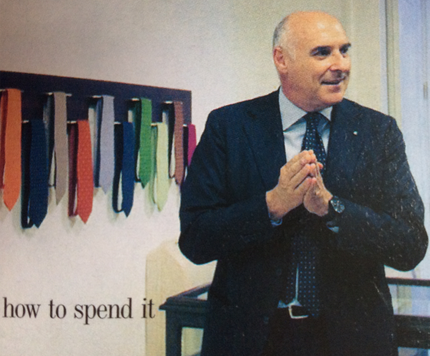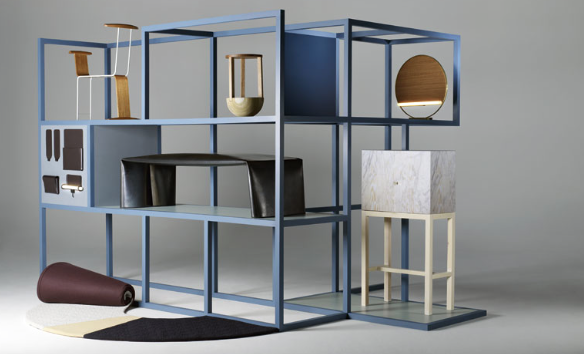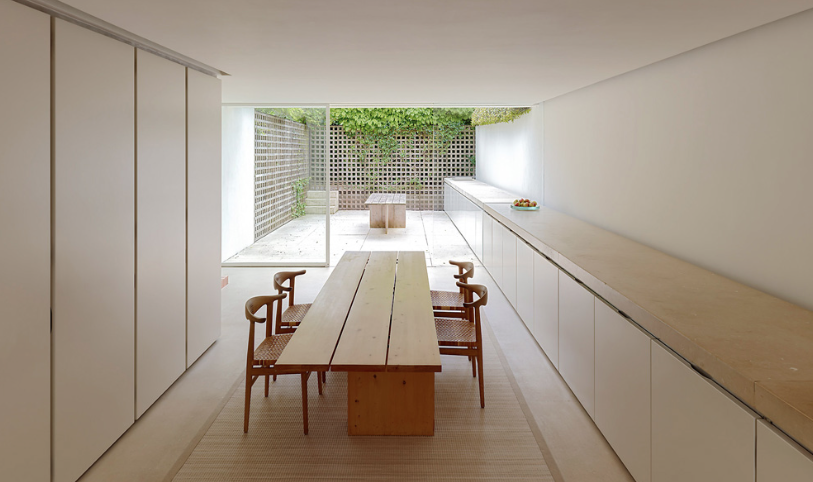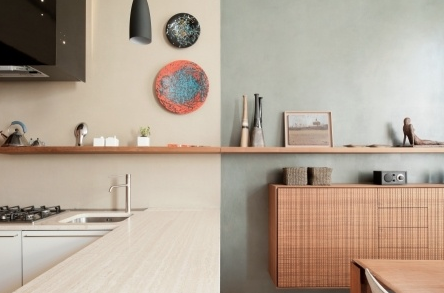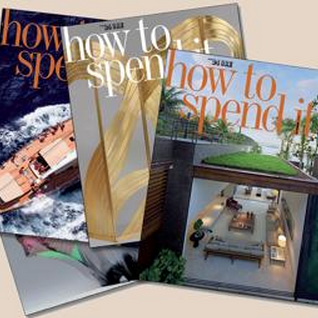
There’s new magazine of the Il Sole 24ore Editorial Group, in Italy: “How to spend it”.
This use of the English language in the name in an Italian magazine sounded me strange to me at first…
Then I understood: it’s a magazine created in Italy, together with The Financial Times, which has been distributing it for 20 years in UK.
Some questions arose spontaneously.
The first one: spending what? Time or money?
Flipping through the pages, I think i got the answer: it’s for people who have a lot of both… good for them! :-)
Second question: do we really need such a format, in these hard times where recession of domestic consumption seems so overwhelming?
Maybe yes, because – as I quickly found out – the magazine promotes widely both Made in Italy brands and the Made in Italy approach to goods and lifestyle.
Speaking of Made in Italy heroes, in a few minutes I ran into a pearl of wisdom that made me forget all my thoughts.
The following quote appeared to me like a message: something to be shared and discussed, with a strong tie to the times we’re living.
A concept appealing to all: entrepreneurs, common people, young generations.
A message regarding our future.
Here’s what Maurizio Marinella, of the historic company of ties and accessories based in Naples, told journalist Roberto Napoletano, in his “Passaporto Italiano” column:
“The message I got from the ones who came before me is departing from Naples, but never leave Naples. Depart from Naples and stay here in Naples”.
(Thank you Mr. Marinella for your inspiration, I wish I could meet you one day).
In my personal opinion, this is exactly what we have to do!
And we of Ermesponti do it. Actually, we do it every single day.
We depart from Italy, continuously (last trip Germany, but also Asia, New York, UK, all over the world, we go where someone asks for an end-to-end solution to an interiors problem), but never leave Italy.
We work worldwide from here.
We design and produce bespoke interiors assuming control of the whole process, from starting idea to turnkey delivery for clients and locations all over the world.
Every time we bring with us the values of the Italian culture and the Italian lifestyle.
This reminds me of another Sole 24 ore editorial content I always follow: the radio program “La Fuga dei Talenti” (Talents’ escape) regarding Italian youngsters going abroad to build their carreers.
In this regard, what I’d like to suggest to Mr. Napoletano – radio24 director – is to focus on a positive attitude, which is still possibile, if we change point of view.
Young people need reasons to stay or come back to Italy, not only to escape from our country!
Let’s all give them new, positive examples! Shouldn’t we try to follow Barbara Santoro’s inspiring example?
Our country still is able to produce high levels of excellence, in alla regards.
As fare as we are concerned, we think that there is a high demand of the highest level of luxury: the perfect customization.
A home fitting you perfectly, like a bespoke suit, exclusively designed for you can really improve your lifestyle and makes you feel better.
Living immersed in beauty and harmony, in a space that represents you perfectly, can really change life from hell to heaven!
In brief, we believe the revolution of the “designed for” instead of the “design-by” it’s coming soon and we are proud to be part of it.
And here’s the modest proposal I’d like to share with Il Sole 24 Ore’s manager Mrs. Nicoletta Polla-Mattiot:
The right header for the Italian edition of this prestigious English magazine must be different from the English one: How to spend it, better!
So, dear Mrs. Nicoletta Polla-Mattiot, when can we expect the new “bespoke issue”?


